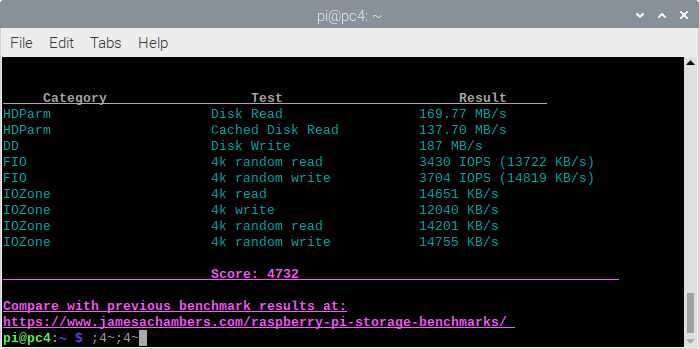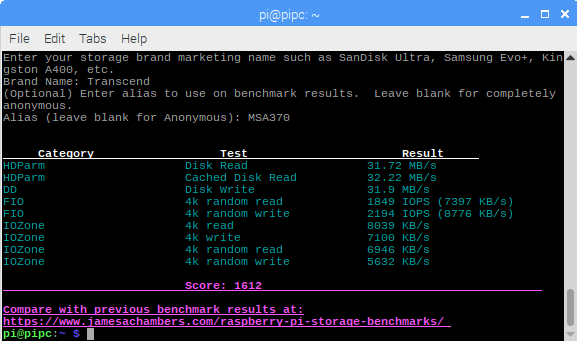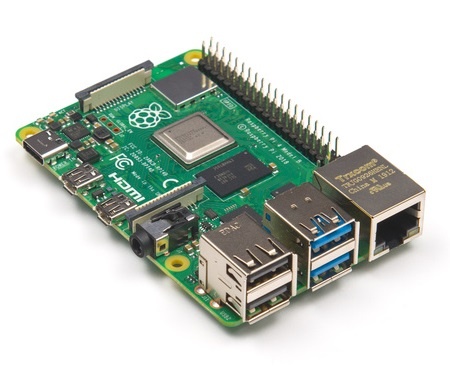For over year I have run a Pi 3 SSD system and have been fairly pleased with the performance. I frequently use this as a semi-portable desktop system and so long as I do not do anything too taxing, it always performed well. With the release of Pi 4, this was an obvious upgrade for me to complete. With the performance improvements highlighted with the Pi 4, a Pi 4 SSD system should be a relatively decent desktop replacement being able to handle email, browsing, and other ‘normal’ activities.
First try
I am far too impatient to wait and I want to use my Pi 4 as a desktop. My unwillingness to delay gratification prevents me from waiting for the Raspberry Foundation to fix the USB boot feature. I mean the Pi 4 is so much faster, especially with the 4GB ram. I spent some time on Google and thought I found how to make a Pi 4 SSD setup in the interim. Read below to see how this plan is turning out.
One of the top results led me to Tom’s Hardware. I use this site frequently and usually with good results whether it is a walk-through or just reviews. When I found the link below I figured this was going to be a simple task. Along with the hardware from this post, I added a Sabrent Rocket Pro 256GB NVMe as it had positive reviews and was priced right for this project’s needs.
https://www.tomshardware.com/news/boot-raspberry-pi-from-usb,39782.html
After following all the instructions I rebooted and thought all was well. I got busy installing all my necessary applications and then thought I would check things out as I was not seeing any activity from the SSD. Using a quick df -h, I checked the storage levels on the SD and SSD and only the SD was increasing. I double check the instructions for anything I may have missed but no-go. Back to the drawing board I go.
Second try
A little more Google searching I found the blog of James A. Chambers. I little more in-depth than Tom’s version but the comments were promising. I saw the part about the Sabrent adapter not working but figured two things. One, this is not technically what I am using, and two, I need to at least try.
My advice is to follow along closely to his step-by-step process. If you tend to get excited and bounce around as you read and do, missing a step or forgetting a piece just creates aggravation.
After going through the steps I feel a sense of accomplishment in how relatively simple this project was. I dot all my I’s and put everything together and… BOOM – Rebooting results in a kernel panic. 😥 This is the worst way to find out your hardware is just not compatible.
Already committed to my Pi 4 SSD project, I reviewed the advice on Mr. Chambers’ site a little more closely and hit up Amazon again. I order up a StarTech.com SATA to USB Cable and Samsung SSD 860 EVO as I have had good performance from these in the past.
Needless to say, the devil is in the details, for hardware specifications at least. Starting back at the beginning and going slow just to be sure, I reboot. The Pi 4 SSD is a success! See the performance results below. This is certainly not the best score, or what I had really hoped for but as I find out later, way better than my Pi 3 SSD (further down).

Pi 3 SSD – a reference point
So what do these results mean? To me at least, results are relative to what you are use to experiencing. I was never necessarily disappointed with the overall performance of my Pi 3 SSD setup but rather I knew what it was capable of and more so what it was not capable of.
What I am replacing with the Pi 4 SSD was a Pi 3 Desktop kit with a Transcend 32GB SATA. I really liked how this kit combined a Pi with the needed interface and rather slick looking case. Among the coolest features, for me at least, was a functional on/off switch with an actual power off with a system shutdown. Yes, I am easy to impress.
So my Pi 4 SSD performance results (4,732) were a little lackluster compared to so of the others on Chambers’ site but here is were we see the impact (to me). The Pi 3 SSD scored a 1,612 – I never realized how slow that was until I tried using them side-by-side. In all fairness, the Pi 4 itself surely plays a role in the overall feel of a comparison. So many factors to consider: Faster processor, more RAM, faster USB, new OS. Either way, that 3,000+ difference was realized.

Back to the relative nature of this and depending on your needs this may be purely superfluous. However, if you intend on using a Pi 4 (or 3) for a daily PC that requires significant read/write and frequent disk access, adding a SSD is an easy enough task with significant benefits.
